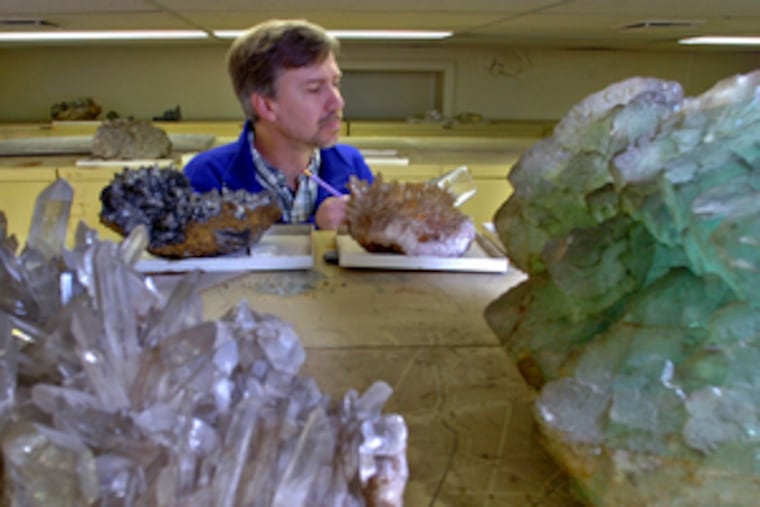Rock on: Academy won't sell collection
The Vaux minerals, subject of a court fight, will remain in the care of the Academy of Natural Sciences.

Mineral enthusiasts hoping to get a few pieces of Philadelphia's historic Vaux mineral collection can put away their checkbooks.
The Academy of Natural Sciences, which had planned to sell the collection and use the money to digitize and modernize its library, has decided to keep it.
Yesterday, academy president William Y. Brown signed an affidavit, to be filed Monday in Orphans' Court, saying the institution on Logan Square "is prepared to keep and properly care for the collection."
Court approval was needed before the sale could take place because the collection was a bequest of William S. Vaux, who created it.
"The vast and seminal collections of the academy, including these, date from the dawn of science in this hemisphere," Brown said in a statement. "We have no higher priority than their stewardship."
Academy trustees had proposed the sale last year and, after working out a contract with a buyer, sought permission from the court.
At a court hearing last spring, however, Vaux's great-great-niece Trina Vaux of Bryn Mawr, who opposed the sale, submitted a plan to have Bryn Mawr College and the Wagner Free Institute of Science take the collection.
With no money to be made in such a transfer, and indications that the court would rule against the sale, the academy decided to file the affidavit.
Brown took over the presidency in February and seemed to be a clear advocate for the collections.
"I feel very strongly that the Academy of Natural Sciences needs to, in general, stand ready to care for its entire collection," he said yesterday. "I think that's expected of us by the people of Philadelphia and people throughout the world that know the academy."
The proposed sale generated months of debate among local advocates and in the national mineralogic community.
The academy had pointed out that its library was valuable, too. It has documents, artifacts and books dating as far back as the 1500s.
But others - even some at the academy - felt it would be close to sacrilege to sell the 7,300-piece collection, which probably would have led to its being broken up.
It was amassed in the 1800s, when Philadelphia was considered a cradle of mineralogy, by Vaux, a Victorian gentleman and academy officer.
He traveled the world to add to it, and many felt that even some of the more common specimens had significant value because they were collected in places that no longer exist as mineralogical sites.
Trina Vaux, who was not available for comment yesterday, wanted the collection to remain intact in Philadelphia, which was a condition of William Vaux's bequest to the academy.
That bequest already had been violated, however. William Vaux wanted the minerals to remain on public view, but for years they had been locked away, unavailable for either display or study. With no full-time curator, some specimens had deteriorated. Some had been pilfered.
In an editorial last winter in the Mineralogical Record, editor-in-chief Wendell E. Wilson lamented the breakup of "a virtual time capsule from a gilded age long past." But he also said that since it was unavailable, "the collection might just as well have been reburied in the ground."
Now, the academy has developed a multiyear plan that includes making improvements to the mineral collection's cabinets and the air-quality systems. A renowned paleontologist, Ted Daeschler, is being named the associate curator of the collection, and Ned Gilmore the manager.
Daeschler said the academy has applied for a grant for a virtual display - putting photos and information online - and Brown said the goal was to put at least part of it on public display, if funding could be secured.
The academy also is establishing an improvement fund to guarantee its long-term care.